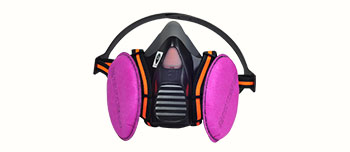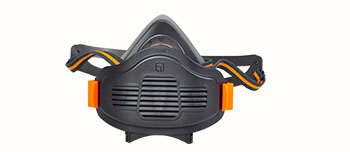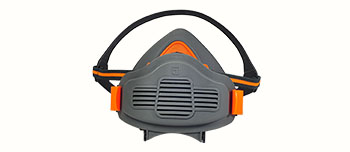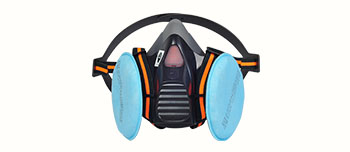1、 The core hazards of welding fumes
Welding dust particles are extremely small and mostly belong to inhalable dust, which can easily enter the deep lungs of the human body. These smoke particles not only have toxicity themselves, but also adsorb other harmful substances in the air, collectively posing a health risk. Lack of effective protection can lead to short-term symptoms such as cough, chest tightness, dizziness, as well as chronic and serious diseases mentioned above.
2、 Selection criteria for protective masks
Not all masks can effectively protect against welding fumes. Ordinary gauze masks or disposable medical masks are almost useless. The selection of protective masks must follow the following core principles:
Efficient filtration efficiency: It is necessary to choose a protective mask that can efficiently filter non oily particles. For welding fumes, masks that meet the KN100 or KP100 level (national standard GB2626-2019) should be selected. Among them, KN100 can achieve a filtration efficiency of over 99.97% for non oily particles; KP100 can achieve the same efficiency for both oily and non oily particles, making it the highest level of protection. KN95 (filtration efficiency ≥ 95%) is the minimum requirement, but in cabin environments with extremely high smoke concentrations, it is strongly recommended to use higher levels of protection.
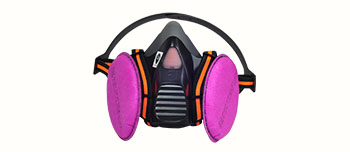
Good adhesion: The sealing of the mask is the lifeline of effective protection. No matter how advanced the filtering material is, if there is a gap between the mask and the face, harmful smoke and dust will be inhaled from there. Choose a model that can tightly fit the nose, mouth, and jaw, and ensure no leakage after wearing. Many protective masks come with silicone masks and adjustable headbands to help achieve better fit.
Comfortable respiratory resistance: Masks with high filtration levels often have greater respiratory resistance. For welders who need to work for long periods of time and high intensity, choosing a mask with a breathing valve can significantly help exhale hot air and water vapor, reduce respiratory resistance, reduce stuffiness, and improve comfort and durability of wearing.
Necessary additional protection: Welding operations not only generate smoke and dust, but also produce glaring arc light. Therefore, it is best to choose a protective mask that is compatible with welding protective masks or designed to be installed inside the mask to achieve synchronized protection of the eyes and respiratory system.
3、 Recommended types of masks
Based on the above standards, ship welders should prioritize the following types of protective masks:
Removable half face mask: This is the most common and recommended option. It consists of a rubber or silicone mask body, replaceable filter elements (filter cotton or filter cartridge), and a headband.
Advantages: High protection level (up to KN100/KP100), good sealing performance, low operating cost (only requiring replacement of filter cotton), mature design of breathing valve.
Attention: It is necessary to replace the filter element in a timely manner according to the concentration of smoke and dust in the working environment. When you feel obvious difficulty breathing or smell an odor, you should replace it immediately.
 English
English

